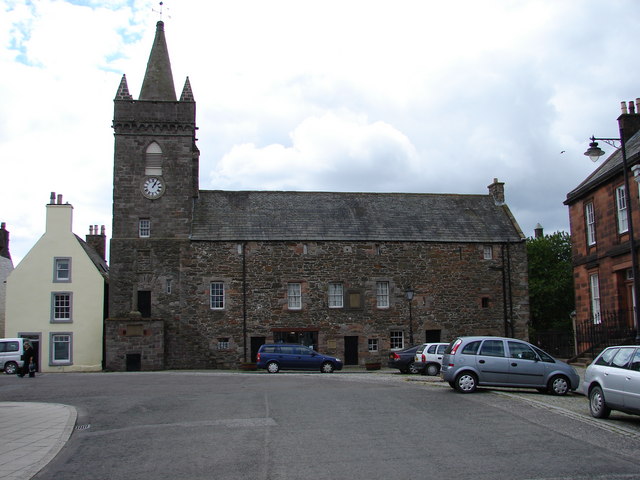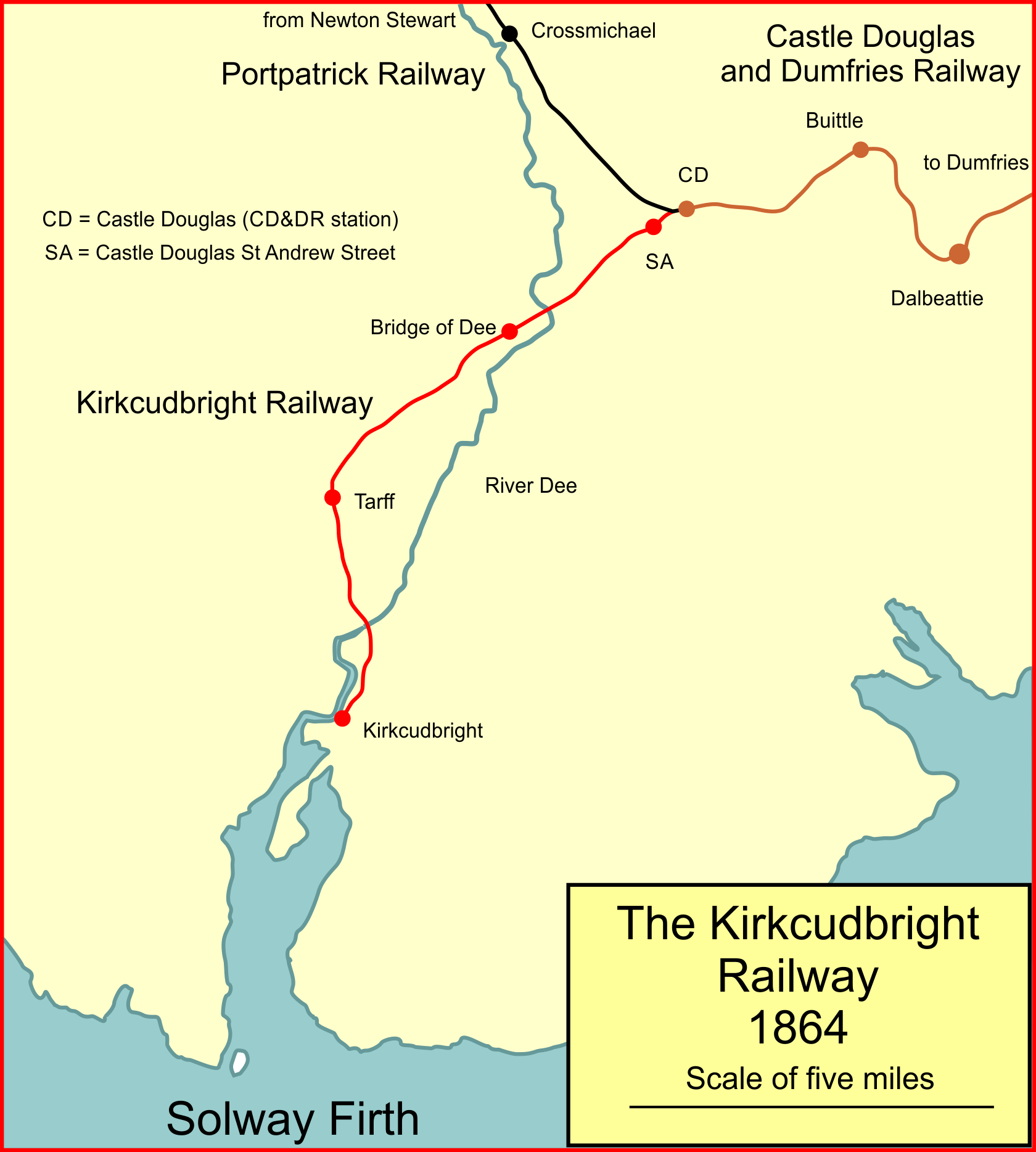|
Bridge Of Dee, Galloway
Bridge of Dee, Galloway is a settlement on the River Dee, Galloway. It lies on the A75 just west of Castle Douglas, and north-east of Kirkcudbright. The former Kirkcudbright Railway, linking Kirkcudbright with Castle Douglas, passed through the village. The station is now a house. People from Bridge of Dee *William Allan Forsyth Hepburn FRSE OBE Military Cross, MC LLD (1891-1950) educationalist Old Bridge of Dee The old bridge was possibly a packhorse bridge, hence the carving. Footnotes {{authority control Villages in Dumfries and Galloway ... [...More Info...] [...Related Items...] OR: [Wikipedia] [Google] [Baidu] |
Bridge Of Dee Station 1897094 C4548fb6
A bridge is a structure built to Span (engineering), span a physical obstacle (such as a body of water, valley, road, or rail) without blocking the way underneath. It is constructed for the purpose of providing passage over the obstacle, which is usually something that is otherwise difficult or impossible to cross. There are many different designs of bridges, each serving a particular purpose and applicable to different situations. Designs of bridges vary depending on factors such as the function of the bridge, the nature of the terrain where the bridge is constructed and anchored, and the material used to make it, and the funds available to build it. The earliest bridges were likely made with fallen trees and stepping stones. The Neolithic people built boardwalk bridges across marshland. The Arkadiko Bridge (dating from the 13th century BC, in the Peloponnese) is one of the oldest arch bridges still in existence and use. Etymology The ''Oxford English Dictionary'' traces ... [...More Info...] [...Related Items...] OR: [Wikipedia] [Google] [Baidu] |
River Dee, Galloway
The River Dee ( gd, Dè / Uisge Dhè), in south-west Scotland, flows from its source in Loch Dee amongst the Galloway Hills, firstly to Clatteringshaws Loch, then into Loch Ken, where it joins the Water of Ken. From there, the Dee flows southwards to Kirkcudbright, and into Kirkcudbright Bay to reach the Solway Firth. The distance is just over in total. Together with its tributaries, the Dee's total catchment area is over . The river is dammed at Tongland, two miles (3 km) upriver from Kirkcudbright. This was constructed as part of the Galloway hydro-electric power scheme in the 1930s. Also at this site is Tongland Bridge, built in 1806 by Thomas Telford. The ruins of Threave Castle stand on an island on the lower part of the Dee. In Ptolemy's 2nd century work ''Geography'' it is recorded as ''Dēoúa''. This form represents a development of Proto-Indo-European'' *deiueh2-'' 'a goddess', which occurs in many Celtic river-names. The Dee has also been known as the ... [...More Info...] [...Related Items...] OR: [Wikipedia] [Google] [Baidu] |
Kirkcudbright
Kirkcudbright ( ; sco, Kirkcoubrie; gd, Cille Chùithbeirt) is a town, parish and a Royal Burgh from 1455 in Kirkcudbrightshire, of which it is traditionally the county town, within Dumfries and Galloway, Scotland. The town lies southwest of Castle Douglas and Dalbeattie at the mouth of the River Dee, around from the Irish Sea. History An early rendition of the name of the town was Kilcudbrit; this derives from the Gaelic ''Cille Chuithbeirt'' meaning "chapel of Cuthbert", the saint whose mortal remains were kept at the town between their exhumation at Lindisfarne and reinterment at Chester-le-Street. John Spottiswoode, in his account of religious houses in Scotland, mentions that the Franciscans, or Grey Friars, had been established at Kirkcudbright from the 12th century. John Balliol was in possession of the ancient castle at Castledykes in the late 13th century and Edward I of England is said to have stayed here in 1300 during his war against Scotland. In 1455 Kirkcudb ... [...More Info...] [...Related Items...] OR: [Wikipedia] [Google] [Baidu] |
Kirkcudbright Railway
The Kirkcudbright Railway was a railway branch line linking Kirkcudbright to the Castle Douglas and Dumfries Railway at Castle Douglas. It opened in 1864, and closed in 1965. Formation and construction By 1861 railways were at last being constructed in the thinly populated districts of South West Scotland. The Castle Douglas and Dumfries Railway (CD&DR) had opened in 1859, connecting with the much larger Glasgow and South Western Railway (G&SWR) at Dumfries, and the Portpatrick Railway, later to be the core of the Portpatrick and Wigtownshire Joint Railway, was being constructed with the intention of linking Portpatrick with the British main line network and encouraging a ferry service to the north of Ireland. Desiring the advantages of connection to the railway network, and fearing the loss of County Town status to Castle Douglas, local interests in Kirkcudbright promoted the ''Kirkcudbright Railway'' to connect the town with Castle Douglas. The cost of construction was esti ... [...More Info...] [...Related Items...] OR: [Wikipedia] [Google] [Baidu] |
Castle Douglas
Castle Douglas ( gd, Caisteal Dhùghlais) is a town in Dumfries and Galloway, Scotland. It lies in the lieutenancy area of Kirkcudbrightshire, in the eastern part of Galloway, between the towns of Dalbeattie and Gatehouse of Fleet. It is in the ecclesiastical parish of Kelton. History Castle Douglas is built next to Carlingwark Loch in which traces of prehistoric crannogs can be found, evidence of early inhabitation of the area. A large bronze cauldron containing about 100 metal objects was found in Carlingwark Loch near Fir Island about 1866. The hoard of tools of iron and bronze is probably Romano-Belgic of the late first or early second centuries AD and is likely to have been a votive offering. It is now in the National Museums of Scotland in Edinburgh. To the North of the town Glenlochar is the site of two successive Roman forts, the first being erected during the invasion of Agricola and the second during the Antonine period. They appear to have been for cavalry units an ... [...More Info...] [...Related Items...] OR: [Wikipedia] [Google] [Baidu] |
FRSE
Fellowship of the Royal Society of Edinburgh (FRSE) is an award granted to individuals that the Royal Society of Edinburgh, Scotland's national academy of science and letters, judged to be "eminently distinguished in their subject". This society received a royal charter in 1783, allowing for its expansion. Elections Around 50 new fellows are elected each year in March. there are around 1,650 Fellows, including 71 Honorary Fellows and 76 Corresponding Fellows. Fellows are entitled to use the post-nominal letters FRSE, Honorary Fellows HonFRSE, and Corresponding Fellows CorrFRSE. Disciplines The Fellowship is split into four broad sectors, covering the full range of physical and life sciences, arts, humanities, social sciences, education, professions, industry, business and public life. A: Life Sciences * A1: Biomedical and Cognitive Sciences * A2: Clinical Sciences * A3: Organismal and Environmental Biology * A4: Cell and Molecular Biology B: Physical, Engineering and ... [...More Info...] [...Related Items...] OR: [Wikipedia] [Google] [Baidu] |
Military Cross
The Military Cross (MC) is the third-level (second-level pre-1993) military decoration awarded to officers and (since 1993) other ranks of the British Armed Forces, and formerly awarded to officers of other Commonwealth countries. The MC is granted in recognition of "an act or acts of exemplary gallantry during active operations against the enemy on land" to all members of the British Armed Forces of any rank. In 1979, the Queen approved a proposal that a number of awards, including the Military Cross, could be recommended posthumously. History The award was created on 28 December 1914 for commissioned officers of the substantive rank of captain or below and for warrant officers. The first 98 awards were gazetted on 1 January 1915, to 71 officers, and 27 warrant officers. Although posthumous recommendations for the Military Cross were unavailable until 1979, the first awards included seven posthumous awards, with the word 'deceased' after the name of the recipient, from rec ... [...More Info...] [...Related Items...] OR: [Wikipedia] [Google] [Baidu] |



